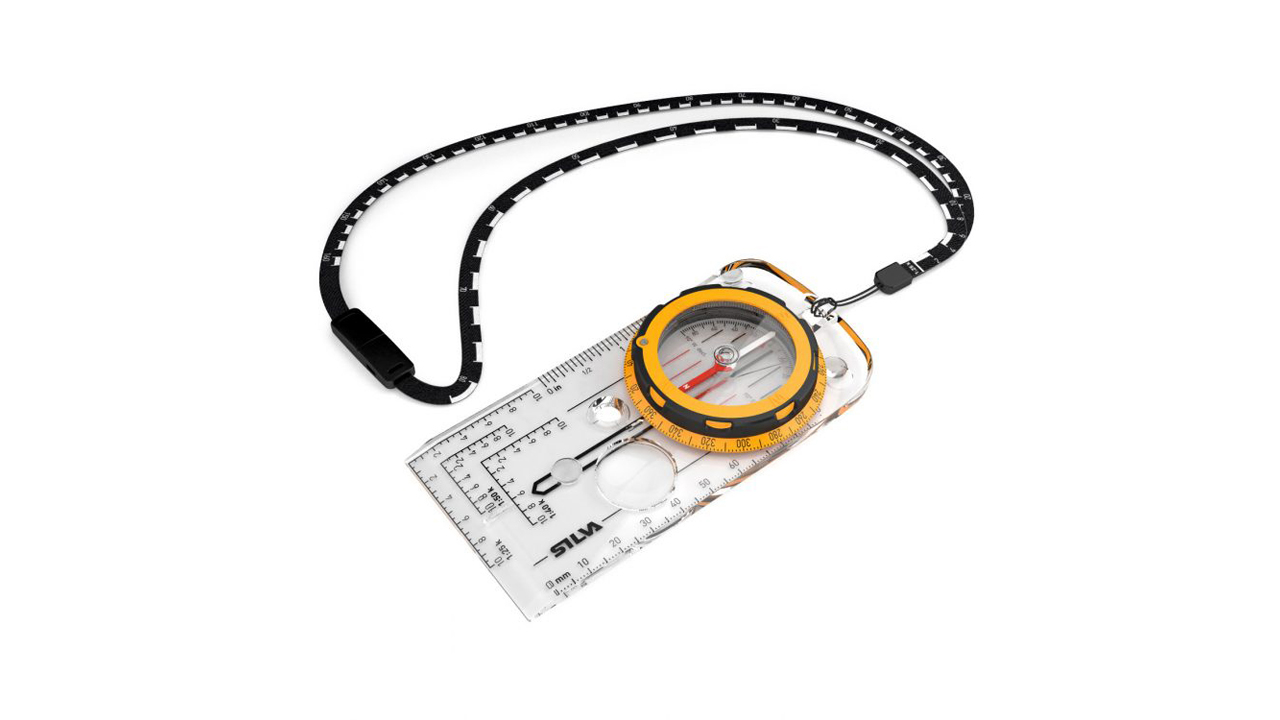Advnture Verdict
The original and still one of the best, the iconic Type 4 is an expedition-worthy base plate compass that allows for precise navigation with many different maps.
Pros
- +
User-friendly design
- +
Needle settles quickly
- +
Practical base plate markings with 1:20k, 1:25k and 1:50k scales
Cons
- -
Cheap lanyard
- -
Bezel not the easiest to grip
You can trust Advnture
First impressions
Silva’s Expedition Type 4 is one of the best compasses you can buy arguably the definitive baseplate compass (our guide to different types of compass explains the benefits), used for everything from Mountain Leader training courses to international expeditions. The design has stayed largely unchanged over the years, and the reason for that is that it simply works, brilliantly.
It’s particularly effective when used in conjunction with the most common UK maps – namely, the Ordnance Survey Explorer and Landranger series, as well as BMC and Harvey maps (check out our handy "how to read a map" guide) – since the grid ref markings on the baseplate are helpfully given in 1:50k, 1:40k and 1:25k Romer scales. All the scales also run in both directions (Eastings and Northings) too. This makes it easy to give 6-figure grid references. There are also distance markers down the sides of the baseplate in mm and inches, respectively. It takes some simple maths to convert these to distance on the ground in kilometres.
A circular magnifying aperture makes it easier to read place names, contours and spot heights or discern landscape features. Usefully, the back of the baseplate has three rubberised ‘friction feet’, which prevent it from sliding around when placed on a map.
• RRP: $70 (US) / £35 (UK)
• Weight: 38g / 1.34oz
• Scales: 1:25k, 1:40k, 1:50k, GPS scales; Lanyard: 1:25 / 1:50, mm/inch
In the field
On the hill, this compass is lightweight and sits easily in the hand, thanks to a rounded ‘butt end’. The needle is easy to read (there’s even an idiot-proof ‘N’ to indicate North on the red half) and settles reasonably quickly, since the housing is filled with viscous damping oil rather than the usual liquid, reducing wobbling and skittishness.
The needle itself is reflective and has a lume bar. It is weighted for use in the northern hemisphere. There are also lume dots either side of the orienting arrow, as well as on the direction of travel and the upper section of the bezel, to aid navigation in low-light conditions. The crisp, clear dial is marked in degrees, showing the four cardinal compass points plus numeric 20-degree increments, with hashing every 2 degrees. This makes it easy to read off an accurate bearing. Orienting lines are marked in two colours, and are clear and true. There’s also a declination scale marked inside the capsule, which you’ll need to remember to use to allow for magnetic declination where this applies.
The bezel turns easily and smoothly, though unlike some other Silva models it lacks an easy-grip rubberised housing. Lastly, the cheap cord lanyard lets the compass down a bit – we wish it came with a distance measuring lanyard like the Silva Ranger.
An outdoors writer and editor, Matt Jones has been testing kit in the field for nearly a decade. Having worked for both the Ramblers and the Scouts, he knows one or two things about walking and camping, and loves all things adventure, particularly long-distance backpacking, wild camping and climbing mountains – especially in Wales. He’s based in Snowdonia and last year thru-hiked the Cambrian Way, which runs for 298 miles from Cardiff to Conwy, with a total ascent of 73,700 feet – that’s nearly 2½ times the height of Everest. Follow Matt on Instagram and Twitter.


